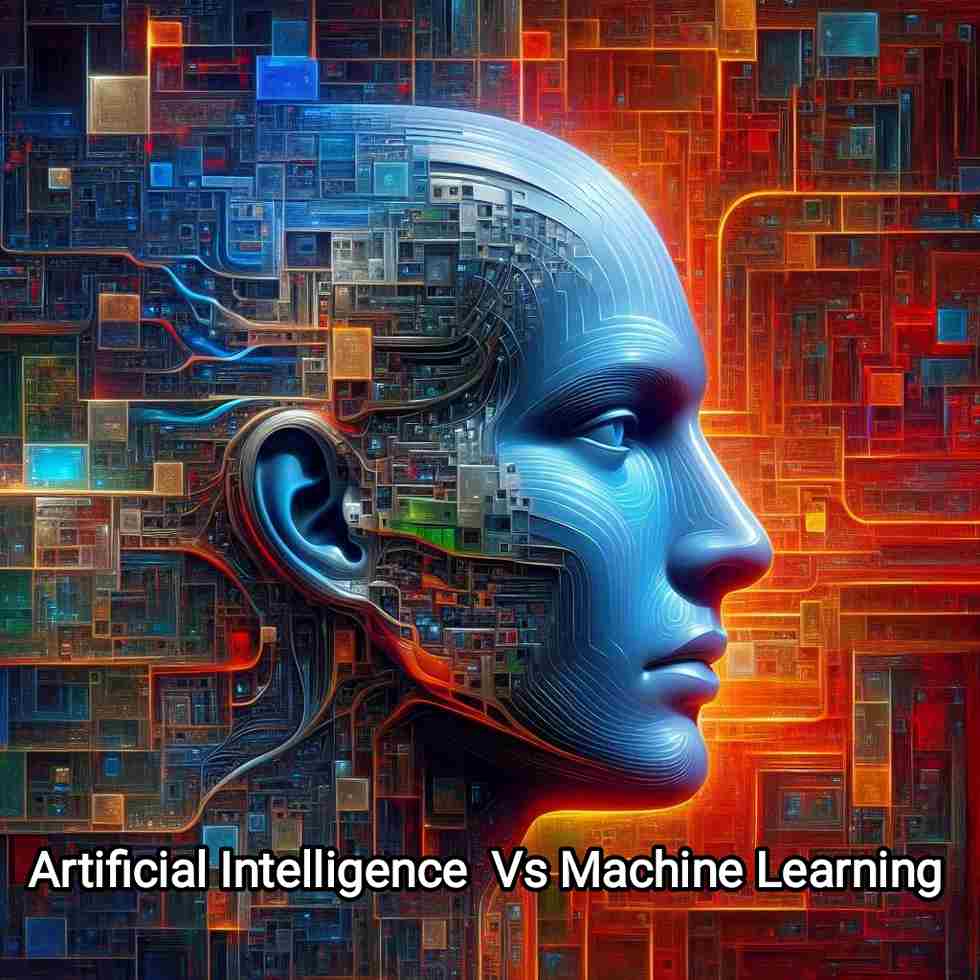Explore the key difference between Artificial Intelligence and Machine Learning. Learn how AI encompasses broader concepts while ML focuses on data-driven algorithms. Discover insights to understand their unique roles and applications.
Table of Contents
Difference Between Artificial Intelligence and Machine Learning in the Context of B.Tech
When venturing into the field of technology during a B.Tech program, students often encounter the terms Artificial Intelligence (AI) and Machine Learning (ML). These concepts, though interconnected, have distinct differences and applications. This post will delve into the intricacies of AI and ML, explaining each in detail and providing examples to illustrate their practical use.

Understanding Artificial Intelligence (AI)
Artificial Intelligence (AI) is a broad field of computer science aimed at creating machines capable of performing tasks that typically require human intelligence. These tasks include problem-solving, decision-making, language understanding, and perception. AI is the overarching concept that includes various subfields, with Machine Learning being one of them.
Key Concepts in AI
- Expert Systems: AI systems designed to mimic human decision-making using a set of rules.
- Natural Language Processing (NLP): The ability of a machine to understand and respond to human language.
- Robotics: The design and operation of robots to perform tasks autonomously.
- Computer Vision: Enabling machines to interpret and make decisions based on visual input.
- Knowledge Representation: The way in which information is formally organized to allow AI systems to process it.
AI in B.Tech Curriculum
In a B.Tech program, AI is usually covered through subjects like:
- Introduction to Artificial Intelligence: Foundational course covering basic AI concepts, history, and applications.
- Robotics and Automation: Practical courses on designing and programming robots.
- Natural Language Processing: Advanced courses focusing on language understanding and generation.
- Computer Vision: Courses dedicated to image processing and analysis.
What are the examples of AI ?
Examples of AI
- Self-Driving Cars: Autonomous vehicles that navigate using AI systems that process data from sensors and cameras.
- Virtual Assistants: Siri, Alexa, and Google Assistant use AI to understand voice commands and perform tasks.
- Healthcare Diagnostics: AI systems that analyze medical images to detect diseases.
Understanding Machine Learning (ML)
Machine Learning (ML) is a subset of AI that focuses on the development of algorithms that allow computers to learn from and make predictions or decisions based on data. Unlike traditional programming, where explicit instructions are given, ML algorithms identify patterns in data and improve their performance over time.
Key Concepts in ML
- Supervised Learning: The algorithm is trained on a labeled dataset, learning to predict outcomes based on input-output pairs.
- Unsupervised Learning: The algorithm identifies patterns in an unlabeled dataset without predefined outcomes.
- Reinforcement Learning: The algorithm learns by interacting with an environment and receiving feedback through rewards or penalties.
- Deep Learning: A subset of ML involving neural networks with many layers, capable of learning complex patterns in large datasets.
ML in B.Tech Curriculum
In a B.Tech program, ML is usually covered through subjects like:
- Introduction to Machine Learning: Basic course on ML concepts, algorithms, and applications.
- Statistical Methods in Machine Learning: Course focusing on the mathematical foundations of ML.
- Deep Learning: Advanced course covering neural networks and deep learning techniques.
- Reinforcement Learning: Specialized course on training algorithms through feedback mechanisms.
What are the examples of ML ?
Examples of ML
- Recommendation Systems: Netflix and Amazon use ML algorithms to recommend movies or products based on user behavior.
- Image Recognition: Facebook’s ML algorithms tag friends in photos by recognizing faces.
- Spam Detection: Email providers use ML to filter out spam by learning from patterns in spam emails.
What is the Difference Between AI And ML ?
Comparing AI and ML
| Aspect | Artificial Intelligence (AI) | Machine Learning (ML) |
|---|---|---|
| Definition | Creating systems that mimic human intelligence and perform tasks autonomously. | Developing algorithms that allow computers to learn from data and make predictions or decisions. |
| Scope | Broad field encompassing various technologies like NLP, robotics, and expert systems. | Subfield of AI focused specifically on learning from data. |
| Techniques | Expert systems, NLP, robotics, computer vision, knowledge representation. | Supervised learning, unsupervised learning, reinforcement learning, deep learning. |
| Applications |
|
|
| B.Tech Subjects |
|
|
| Examples |
|
|